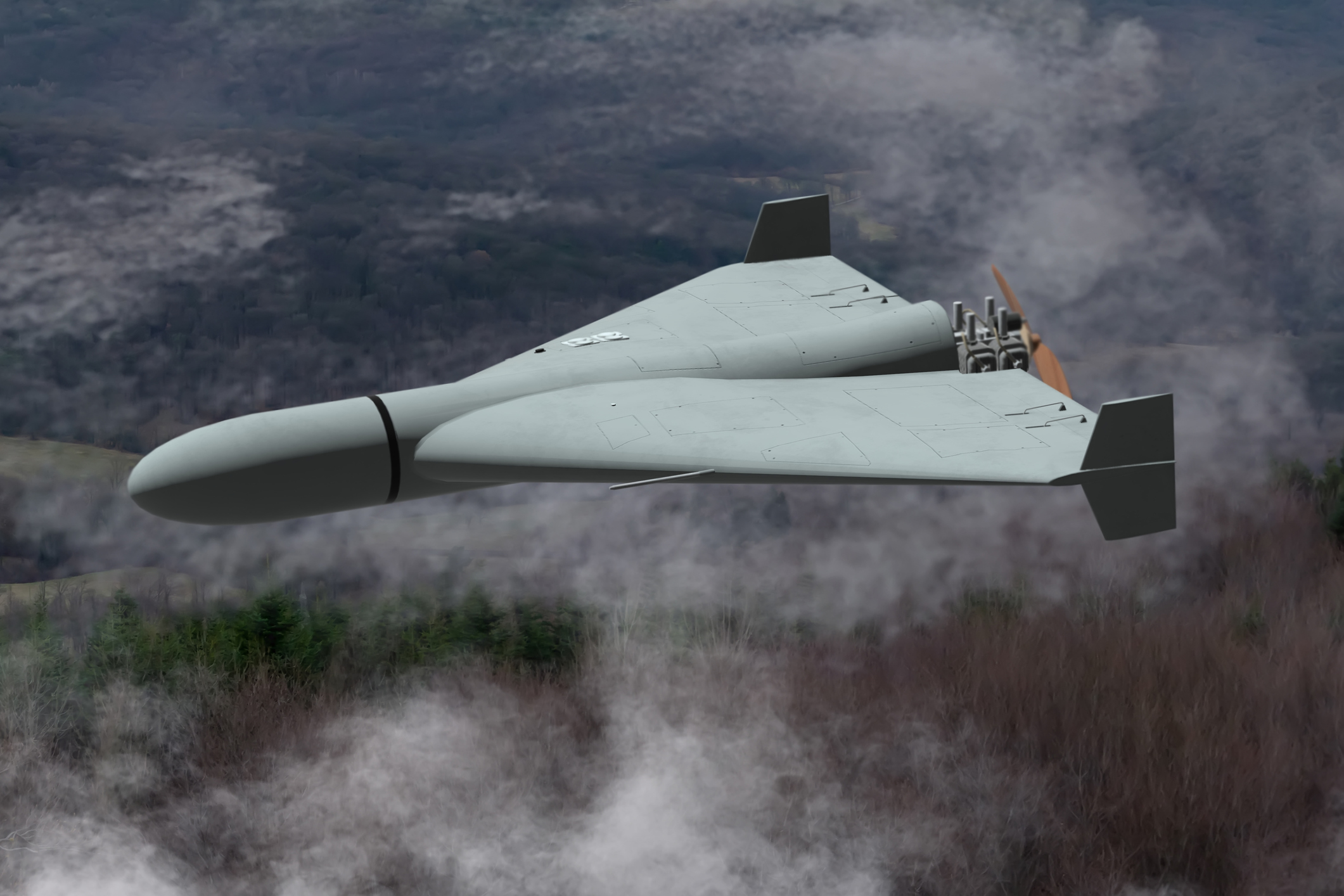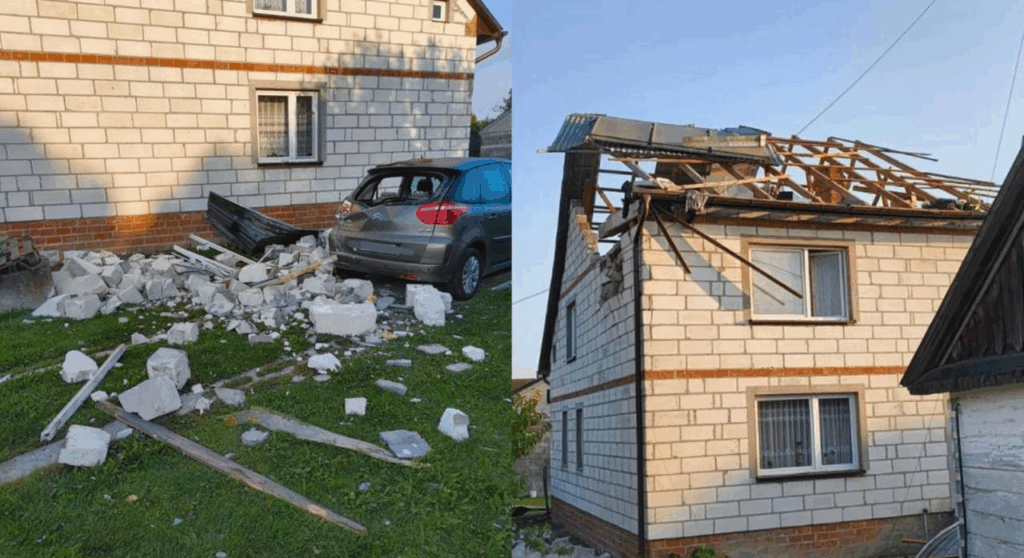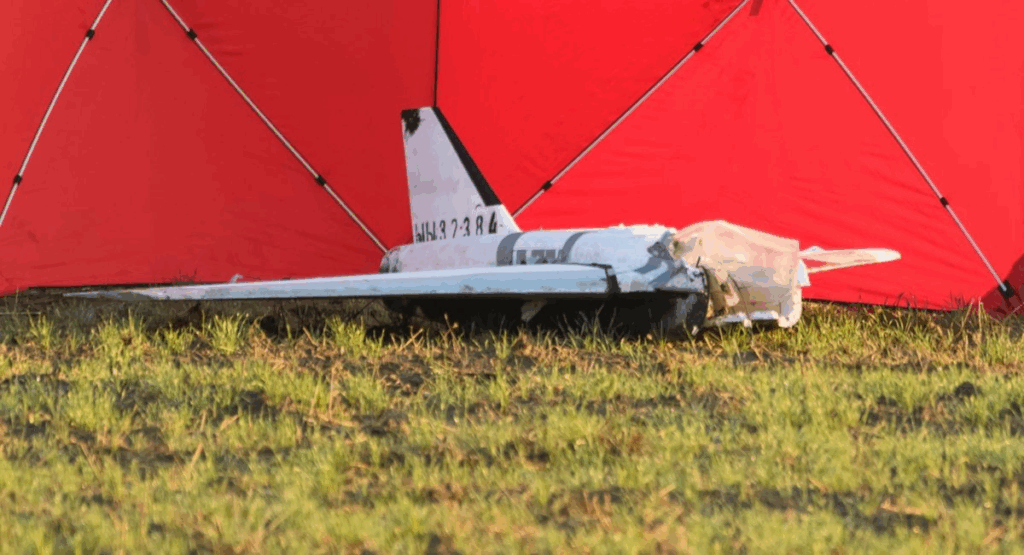Military targets and a test for NATO: experts reveal the purpose of the Russian drone attack on Poland
10 September 20:18
The attack by dozens of Russian drones on Polish territory was an unprecedented incident in NATO airspace. Experts emphasize that this was not an accident, but a deliberate operation by the Kremlin to test the reaction of Europe and its security systems.
The drones could have targeted specific military and logistics facilities, but were intercepted in time. NATO’s response with the deployment of F-16 and F-35 fighters showed the Alliance’s readiness, but Europe’s long-range strike capabilities remain limited. The information component of the incident also plays a role: Moscow is already spreading the narrative of a “NATO provocation” and a “Ukrainian provocation.”
The nighttime attack showed that Russia’s escalation goes beyond Ukraine, and it is up to the Allies to stop further threats to Europe. How will the allies respond to the new threats, will they be able to effectively deter the Kremlin, and what does this incident mean for Europe’s security?
On the night of September 10, Russia launched another massive attack on Ukraine, which had consequences for its allies. In addition to launching cruise missiles, Russian drones violated Polish airspace – at least 19 cases were recorded.
What is known about the attack on Poland
At about 6 a.m., the Ukrainian Air Force reported a massive missile launch. Cruise missiles X-101 were launched from Tu-95MS aircraft, as well as Kalibr missiles from ships of the Black Sea Fleet. The missiles entered the territory of Ukraine through Chernihiv and Odesa regions and headed to the western regions. The strikes were recorded in the direction of Lviv, Ivano-Frankivsk, and Zakarpattia (Kalush, Burshtyn, and Stryi). After 7 a.m., the “Shahids” attacked Lutsk, and one of them flew back toward Poland.
OSINT analysts reported that the Russian drones flew about 250 kilometers into Poland. As it turned out, this time they did not come from Ukraine.
Polish Prime Minister Donald Tusk confirmed that a significant number of the drones came directly from Belarus.
“During the night, 19 airspace violations were recorded. The direction is new in the worst sense – the drones did not come from Ukraine, not because of provocations or mistakes, but as a direct threat. This is the first time during the war that a significant number of drones have invaded from Belarus,” Tusk said.

According to him, four drones were probably shot down. Polish F-16s, Dutch F-35s, Mi-24, Mi-17 and Black Hawk helicopters took part in the operation.
The Polish edition of Rzeczpospolita even reported 23 drones that violated the border. Due to the danger, airports in Warsaw, Lublin, and Rzeszow were temporarily suspended.
Poland’s response
In response to the unprecedented incident, Warsaw officially asked NATO to invoke Article 4 of the Washington Treaty.
“We appreciate the expressions of solidarity, but words alone are not enough. Poland will ask for much more support from its allies,” Tusk emphasized.
Article 4 stipulates that any member state may initiate consultations if its security or territorial integrity is threatened.
Brussels has already confirmed the consultations. NATO sources note that this is the first time that NATO aircraft have opened fire on targets in an ally’s airspace.
Polish President Karol Nawrocki said he was in constant contact with the Minister of Defense and military leadership because of the threat posed by the violation of the country’s airspace.
“Soon I will hold a briefing at the National Security Bureau, which will be attended by the head of government. The security of our homeland is a top priority and requires close cooperation,” Navrotsky emphasized.
Following Russia’s nighttime attack and unprecedented drone infiltration into Poland, Warsaw has begun deploying troops to the border with Belarus. This is happening on the eve of the large-scale Russian-Belarusian exercise West 2025, which is traditionally accompanied by a show of force. However, in one way or another, this is a show of force.

NATO officially responds to Russian drone attack in Poland
For the first time, the North Atlantic Alliance commented on the incident with Russian drones that violated Polish airspace at night. This was reported by a NATO spokeswoman on the X network.
The Alliance noted that the drones were intercepted by the Polish air defense system and NATO air defense forces, and Secretary General Mark Rutte is in constant contact with the Polish leadership.
“Numerous drones entered Polish airspace at night and were met by Polish and NATO air defense systems. The Alliance Secretary General is in touch with the Polish leadership and NATO is in close consultation with Poland,” the statement said.
Rutte emphasized that regardless of whether the incursion was intentional or accidental, it is “absolutely reckless and dangerous.” He called on Russia to stop escalating the war and to refrain from violating the airspace of member states.
“We are ready, we are vigilant and we will defend every inch of NATO territory,” Mark Rutte emphasized.
According to him, the North Atlantic Council has already convened for an emergency meeting in response to Poland’s request for consultations under Article 4 of the Washington Treaty.
The allies expressed full solidarity with Warsaw and condemned the Kremlin’s actions. NATO emphasized that such incidents “are not isolated” and the Alliance will continue to increase vigilance on its eastern flank. Air defense assets will remain on high alert.

At the same time , Reuters writes that the North Atlantic Alliance does not consider the recent intrusion of Russian drones into Polish airspace as an attack on a member state.
However, this is the first time that NATO aircraft have opened fire on potentially dangerous targets in an ally’s airspace.
“This was the first time that NATO planes attacked potentially dangerous targets in an ally’s airspace,” the source told Reuters.
The operation involved Polish F-16 fighters, Dutch F-35s, Italian AWACS long-range radar detection aircraft, and refueling aircraft under NATO control.
At the same time, the Alliance emphasized that a full assessment of the incident is still ongoing, but the event has already demonstrated NATO’s readiness to act in the event of a threat to the security of its allies.
Aviation expert explains why it was no accident
Aviation expert Kostyantyn Kryvolap in an exclusive commentary for
“Here, the Russians will say that this is some kind of technical failure, that it was done by the Ukrainians with their electronic warfare equipment… But in my opinion, this is clearly a Russian provocation, which should have been expected,” Kryvolap said.
The expert connects the night’s events with other recent strikes and tense diplomatic visits, and sees it as part of a common logic of escalation.
“I combine it with what happened at the Cabinet of Ministers. The attack on the Cabinet of Ministers and the attack on Poland are, in my opinion, events of the same category,” said Kryvolap.
Kryvolap spoke particularly harshly about the possible “coordinators” of the operation:
“This is Mr. Xi’s permission. Xi gave permission to work like this. He showed that there are three of them. Putin, Xi and Kim,” Kryvolap said.

These were attacks on military facilities in Poland, they were just stopped in time
Military expert Anatoly Khrapchinsky in an exclusive commentary for
According to him, it is wrong to reduce the nighttime incident to a “provocation” by Russia, as the drones could have had specific targets.
“Why don’t we consider that these were already attacks on a logistics center and a military facility in Poland? They were simply stopped in time. The drones were intercepted at the stage of performing combat missions, so we cannot know where exactly they were flying,” emphasized Anatoliy Khrapchynsky.
Khrapchynsky compared the actions of the Russian Federation to “a hoodlum trying to get into a fight” and reminded that Russian special services have already had operations aimed at destabilizing the security of Europe – from the attack on the plane of European Commissioner Ursula von der Leyen to sabotage in the Baltic Sea.
The expert emphasized that the Alliance’s coordinated response to the attack in the skies of Poland is a positive signal.
“The involvement of the Netherlands, long-range radar detection aircraft, F-35 and F-16 is a very strong response. But now it is important to see whether this will result in strengthening the air defense system of Europe and Ukraine,” Anatoliy Khrapchynsky said.
The expert questioned the position of some NATO representatives who stated that the incident was not related to Article 5 of the treaty.
“This is not true. We don’t know where these drones were flying to, because they were intercepted while performing a combat mission. The question is whether Europe’s actions will continue to be pointed and fragmented, or whether a unified position will finally be formed to protect Ukraine and strengthen its own capabilities,” Khrapchynsky said.
What could be the answer and who will give it?
Kostyantyn Kryvolap believes that the expected response should be military and target airfields and military targets, but at the same time doubts the ability of individual European countries to deliver an effective long-range response.
“Reaction is a strike and a response to airfields and military targets… If there is no reaction, it will be somehow stupid. And it turns out that it is not the Poles who should respond, but us. Because the Poles have nothing to respond with,” Kryvolap said.
He cited different estimates of the number of drones (from eight to fifteen) and recalled the temporary closure of several airports:
“There were four airports closed. But the Poles brought up airplanes-they shot down these drones with F-16s. This shows that the Poles, and Europe in general, have no protection against shahid drones,” Kryvolap said
Kryvolap emphasizes that European countries have limited capabilities for long-range strikes (300-500 km), and the supply of heavy weapons and their volumes remain insufficient for a sustainable response to such provocations.
“Europe doesn’t have… long-range weapons at all, more than 300-500 kilometers. Europeans do not have them. We are already using them. They can’t give us more, because they don’t have enough,” states Kryvolap.
He also noted that the information processing of the incident will be an important element of further confrontation – Moscow, according to him, is already preparing a narrative about “NATO provocation” and “Ukrainian provocation.”
“The Russians will now disperse the narrative that it was all NATO… Ukrainians provoked, and NATO is escalating,” warned Kryvolap.
Reaction of the world and Russia
President of Ukraine Volodymyr Zelenskyy called the attack extremely dangerous for Europe. He emphasized the need for a coordinated and strong response.
“This is an extremely dangerous precedent for Europe. The Russians must feel the consequences. We need enough weapons to deter Russia. We need a strong response, and it can only be a joint response of all partners: Ukraine, Poland, all Europeans, the United States,” Zelenskyy said.
Head of the President’s Office Andriy Yermak noted that Russia feels permissive and is trying to raise the degree of war.
“Instead of ending the war, Putin is trying to expand it. Now much depends on strong, coordinated response actions. Russia must be forced to stop the war. This can be done together. Ukraine is well aware of Russia’s weaknesses,” Yermak
Republican Congressman Joe Wilson called the incident an “act of war” and called on the US administration to respond decisively.
“Putin is no longer confining himself to Ukraine, he is directly testing our resolve on NATO territory. We need to impose sanctions and provide Ukraine with weapons to strike at Russia,” Joe Wilson
At the same time, US President Donald Trump ignored journalists’ questions about the drone attack in Poland.
Ukraine’s Foreign Minister Andriy Sybiga pointed out that Putin’s aggressive behavior is a consequence of the West’s insufficient response to Russia’s previous crimes.
“The longer he does not receive force in response, the more aggressive he becomes. A weak response now will provoke Russia even more – and then Russian missiles and drones will fly even further into Europe,” Andriy Sybiga
The High Representative of the European Union for Foreign Affairs and Security Policy, Kaja Kallas, said that last night in Poland we witnessed the most serious violation of European airspace by Russia since the beginning of the war, and there are signs that it was intentional, not accidental.
“We must raise the price for Moscow, increase support for Ukraine and invest in the defense of Europe. The EU has an important role to play and we will support initiatives such as the Eastern Border Shield defense line,” Kallas wrote.
Russia has obviously shirked responsibility. Putin’s spokesman, Dmitry Peskov, would not comment on the incident:
“All questions are for the Defense Ministry,” he said, avoiding a direct answer about the drones’ intrusion into Polish airspace.
The incident with the Russian drones in Poland demonstrates that the Kremlin is ready to go beyond Ukraine and test the reaction of its allies. NATO’s timely response demonstrated the Alliance’s strength, but the limitations of European air defense systems and heavy weapons point to the need to strengthen defense. The next steps by NATO and Ukraine will be key to deterring further escalation and ensuring Europe’s security.









